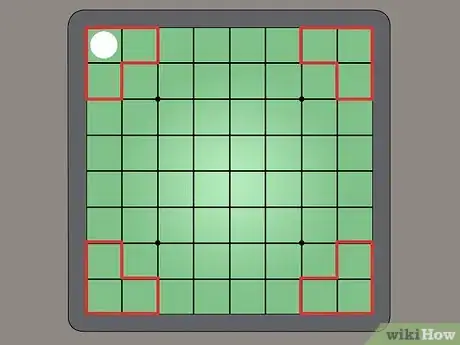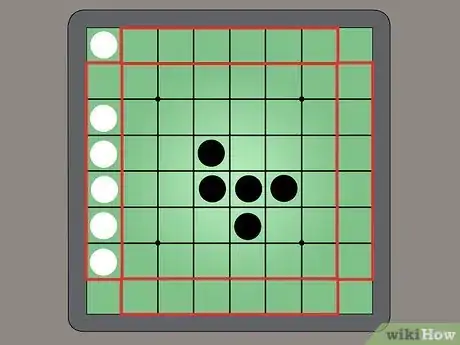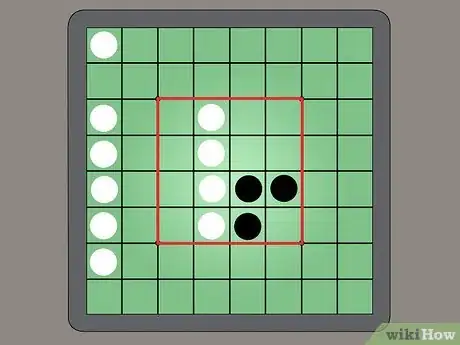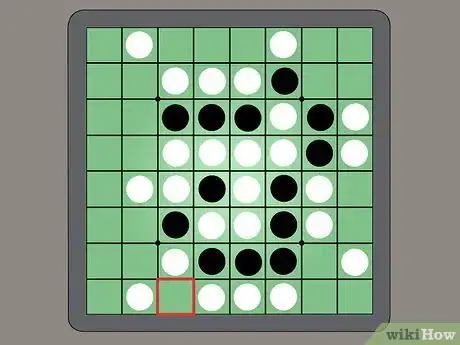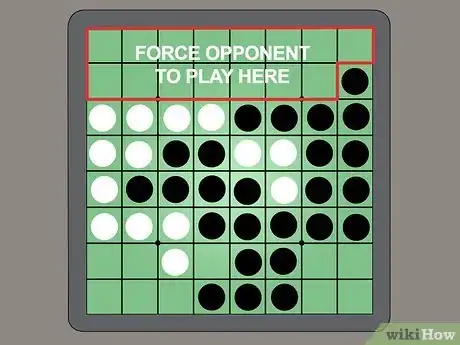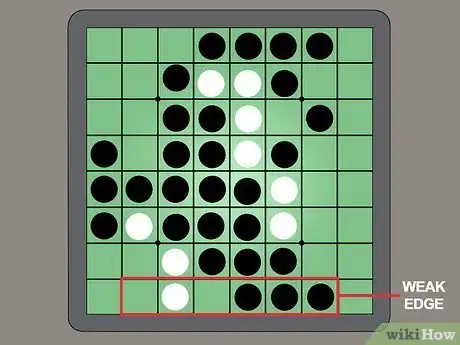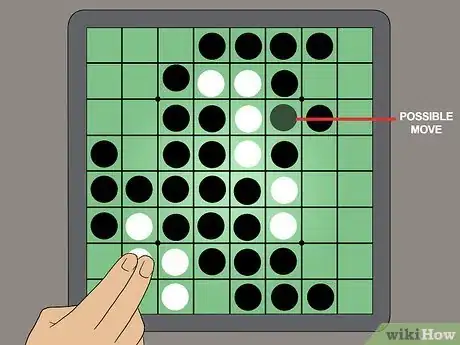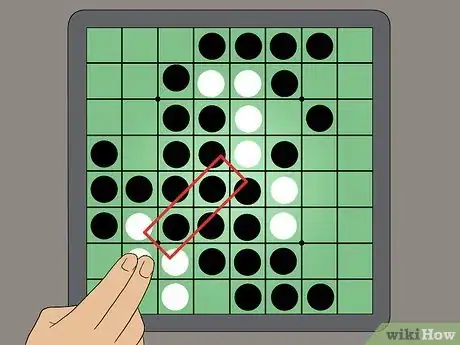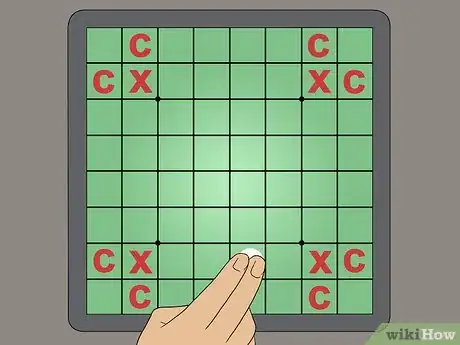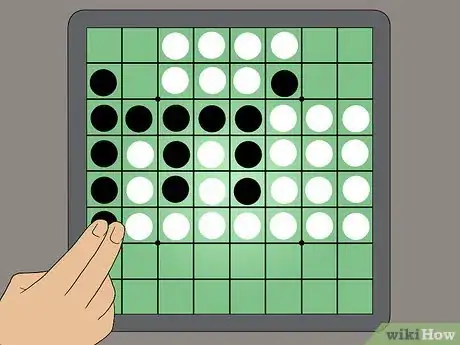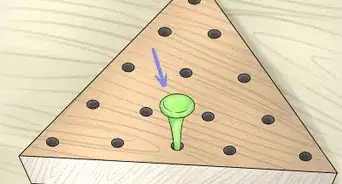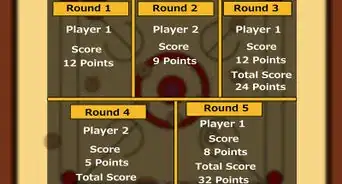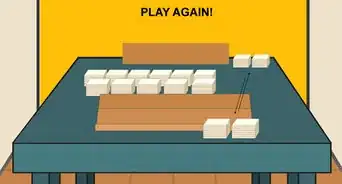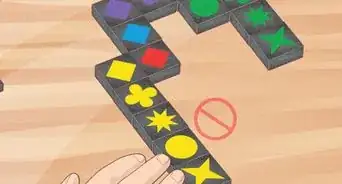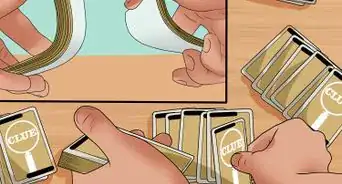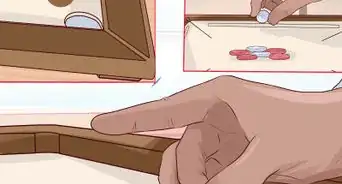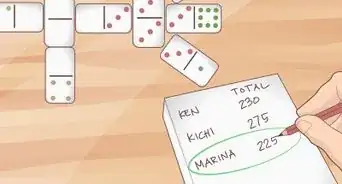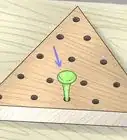This article was co-authored by wikiHow staff writer, Janice Tieperman. Janice is a professional and creative writer who has worked at wikiHow since 2019. With both a B.A. and M.A. in English from East Stroudsburg University, she has a passion for writing a wide variety of content for anyone and everyone. In her free time, you can find her working on a new crochet pattern, listening to true crime podcasts, or tackling a new creative writing project.
This article has been viewed 34,788 times.
Learn more...
Othello is a strategy game that’s easy to learn and play, but more difficult to win. If you’re a new player, you might feel a bit frustrated, especially if you haven’t been able to win a game yet. Although there’s no guaranteed path to victory, you can give your chances of success a big boost by taking a few minutes to explore some unique tips and tricks to the game.
Steps
-
1Secure the corner spaces with your discs. Keep an eye out for a chance to place 1 of your 32 discs in a corner space, which can be found in the top-left, top-right, bottom-left, or bottom-right squares of the board. In Othello, you gain more control by “outflanking” your opponent, or surrounding their discs and flipping them to your playing color. When you have a corner spot, your opponent is unable to outflank you, which guarantees you a permanent spot on the board.[1]
- A disc that can’t be flipped over is also known as a “stable disc.” Ideally, you want to create as many stable discs as possible.
-
2Claim as much edge space as you can. When possible, arrange some new discs along the north, west, east, or south edges of the game board. While claiming edges won’t guarantee you a win, it makes it much more difficult for your opponent to outflank you and flip over your discs. As a general rule of thumb, focus on claiming edges where you’ve already secured the corner.[2]
- If you place 5 discs on an edge without securing a corner, you have an “unbalanced edge.” When your discs are placed like this, your opponent may be able to outflank you and reclaim the edge.
Advertisement -
3Keep some of your discs in the center of the board. While it’s important to get corner and edge space, make sure you have plenty of discs in the center of the board as well. If you keep your pieces centered, you’ll likely have more opportunities to outflank your opponent and claim more spaces.[3]
- Keep your discs in the center of the board, then slowly expand toward an edge or corner. If you develop 2 rows of Othello discs along an edge, your opponent won’t be able to outflank and flip those pieces.
-
4Use wedges to your advantage during a turn. Look for spaces on the board where your opponent leaves an open space, or wedge, between 2 of their own pieces. When you place a disc in this wedge, you open up a lot of outflanking opportunities for yourself. While wedges won’t always give you an advantage, they may still help you get the upper hand on your opponent.[4]
- When you play a wedge, your opponent is unable to flip your disc to their color, even when your piece is between 2 enemy discs.
- From a defensive standpoint, try to avoid creating wedges with your own discs, as your opponent may take advantage of the opening.
-
5Force your opponent to move their tiles to bad territory. Continue making plays on 1 side of the board until your opponent is forced to place their discs in a different area. This can give you the upper hand in the middle or end of the game, depending on how you and your opponent both place your discs.[5]
- For example, if you have the upper hand against your opponent, you may want to move your tiles to the north side of the board to gain more territory. Your disadvantaged opponent will not want to play in that section of the board since they’ll get outflanked. With this in mind, make plays on the south side of the board until your opponent is forced to make a play in the north.
- This strategy is also known as gaining a “tempo.”
-
6Capture your opponent’s weak edge when you get the chance. Keep an eye on your opponent’s gameplay choices, especially if they have a disc on a C-square, or square that’s directly adjacent to the corner spot. Place one of your squares on an X-square, or space that’s diagonally adjacent to the corner, which can apply extra pressure on your opponent.[6]
- While this trap doesn’t always work, you may be able to secure a corner if you force your opponent to make a tough decision.
- This is also known as a “stoner trap.”
-
1Think 1 turn ahead before making any big plays. Remember that Othello, first and foremost, is a strategy game. Instead of placing a disc right away, try to think about what your opponent will do on their turn. Use this insight to make a smart, calculated play with your own disc.[7]
- For instance, if you think your opponent will outflank several of your own discs, try connecting your discs to an edge or corner to make them stable.
-
2Flip as few discs as possible with each play. Dramatic plays where you flip 4 or 5 discs can be fun, but they aren’t practical in the long run. When you capture a lot of space at once, you have more vulnerable discs for your opponent to capture. Instead, work through the game in baby steps, capturing 1-2 tiles at a time.[8]
- Flipping a lot of discs can work if you’re at a severe disadvantage, and your opponent has many more tiles than you.
-
3Don’t place any isolated discs right next to corners. Find the “C-squares” and “X-squares” on the board, which are the tiles directly next to the corner spots. Try not to place an isolated disk in any of these areas—since Othello is focused on outflanking and flipping tiles, that type of play may help your opponent secure a coveted corner space.[9]
- Only take a C- or X-square spot if you already have a lot of tiles in that area.
- If a play seems like it’s too good to be true, it probably is.
-
4Sacrifice a move so your opponent can’t progress. Flip a single disc in a neutral play that won’t benefit you in the long run. While you won’t assert more control over the board, pick a move that forces your opponent to play a neutral, non-beneficial move.[10]
- This is also known as a “perfectly quiet move.”
- These types of moves limit your opponent’s options, or leave them with fewer options than before.
References
- ↑ http://www.ffothello.org/livres/beginner-Randy-Fang.pdf
- ↑ http://radagast.se/othello/Help/strategy.html
- ↑ http://www.tedlandau.com/files/Othello-B%26B.pdf
- ↑ http://radagast.se/othello/Help/strategy.html
- ↑ http://radagast.se/othello/Help/strategy.html
- ↑ http://radagast.se/othello/Help/strategy.html
- ↑ http://radagast.se/othello/Help/strategy.html
- ↑ http://radagast.se/othello/Help/strategy.html
- ↑ http://www.ffothello.org/livres/beginner-Randy-Fang.pdf
